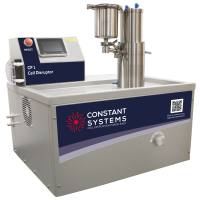In Vitro Expression Systems for the Huntington Protein
互联网
480
Huntington’s disease (HD) is an autosomal dominant neurodegenerative disorder resulting from expansion (>37 units) of a polyglutamine tract in huntingtin, a 350 kDa protein of unknown function (1 ). The N-terminal region of huntingtin contains the glutamine repeat, which is encoded by exon1 of the HD gene. Normal huntingtin is a cytoplasmic protein and is expressed ubiquitously, but N-terminal fragments of huntingtin with expanded polyglutamine tracts are able to accumulate in the nucleus and form aggregates. A large body of evidence has shown that N-terminal huntingtin with expanded glutamine repeats is toxic and can kill cells (2 –8 ). For example, transgenic mice (R6/2) expressing the HD exon1 protein with more than 115 glutamines develop neurological symptoms and neuronal intranuclear inclusions consisting of huntingtin aggregates (2 ). Similar nuclear aggregates are found in patients with HD (3 –5 ) and other polyglutamine diseases (9 ).









